Back pain is a common phenomenon that occurs regardless of age, but is more common in adults. It can be caused by many factors, from physiological factors to diseases. Sometimes back pain appears shortly and passes quickly. However, pain in the lower back can be a sign of a serious illness, and in these cases it is necessary to consult a doctor immediately.
Reasons
There are many causes for acute back pain, they are completely individual for each patient. The most important of these are diseases and changes in the spine that can respond with irreversible consequences.
Basic (most common)
The most common reasons are:
- Osteochondrosis. Unusual movement puts pressure on the roots of the spinal cord. Burning and nagging during the day does not stop, if you lift something heavy, there is simply hell pain in the lower back.
- Herniated disk. Generally, a spinal hernia is localized in the lumbar region, and any sudden movement of the trunk leads to compression of the nerve roots.
- Radiculitis. With lumbosacral radiculitis, a shooting pain syndrome occurs. Causes heavy lifting or unsuccessful movements. Acute pain limits the patient's movements to such an extent that he is unable to correct them and remains in the same position as when the attack occurred.
- Vertebral displacement. This problem is characterized by shooting pain in the lower back and slightly below, stiffness of movement. This pathology is accompanied by urinary incontinence and impaired intestinal function.
- Facet Syndrome. As the faces of the intervertebral discs expand both above and below, the intervertebral foramen shrinks. In this case, there are unpleasant feelings that come suddenly and occur more than once a month. Leaning on his back, the patient has discomfort in the back.
- Epidural abscess. Accumulation of pus in the spinal cord occurs due to infectious diseases of the urinary tract. In addition to pain, fever, weakness and an increase in body temperature occur.
These are the causes - the consequences of diseases of the spinal cord.
Due to the difference in leg length of 2-3 cm, low back pain can occur. It is difficult for a person to move, there is pain in the back due to the constant curvature of the waist.
Overload and physical fatigue
In addition to severe diseases, severe back pain is also a great burden and a sharp forward bending of the trunk. In addition, this problem occurs when the effect of heat on the body is disrupted. Sources of this pain:
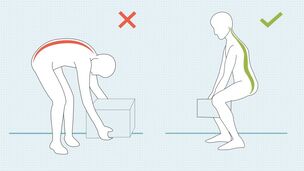
- Muscle stretching. Exacerbation of lower back muscle tension occurs due to physical exertion. Muscle contraction causes pain and reduces mobility. This problem occurs in athletes and people who work hard.
- Neuralgia. Hypothermia of the back leads to neuralgia - irritation or compression of the nerves. The pathology manifests itself in different ways: sometimes in the form of seizures, accompanied by redness of the affected area, tremors, tissue edema and profuse sweating.
- Myositis. Lumbar pain and discomfort begin at night, with a sudden rise, followed by a change in weather conditions, after hypothermia and overexertion.
Frequent colds, decreased immunity, and both fresh and old blows or spinal injuries after a fall can cause an attack.
Disorders of internal organs
Sometimes there is pain in the lower back due to damage to other organs: heart, liver, kidneys, lungs, gallbladder. Pain syndrome from the lumbar region during respiration is different across all nerve channels. The most common causes of this pathology are:
- Pyelonephritis. It is an infectious inflammation of the kidneys and urinary tract. The pain is usually dull, but attacks occur with chills, weakness, nausea and vomiting, and fever.
- Urolithiasis. The problem manifests itself as a sudden sharp pain that becomes unbearable after a long walk and hard work. The attack is accompanied by nausea, vomiting and blood in the urine.
- Ectopic Pregnancy. If there is a rupture of the fallopian tube, there is a burning pain that spreads to the groin and rectum. The rupture is accompanied by loss of consciousness and a hematoma forms in the peritoneal cavity with the lower part of the tubal.
- Pelvioperitonitis. This is a transient inflammatory process of the uterine appendages. The woman has unbearable pain in the groin and back. In addition to the existing discomfort, chills, fever and palpitations are added.
- Tumors of different origins. Metastatic cancer causes painful attacks when pressure is applied to nerve endings. Often there are no early signs of the disease.
Lesions with severe pain in the lower back are more difficult to diagnose. Therefore, you should immediately contact a specialist or call an ambulance. In some cases, delays can lead to serious health problems and even death.
Back pain is almost always felt in pregnant women. This is due to the reconstruction of the body and the increase in the load on it. Both can lead to difficult or complicated labor.
Symptoms of possible diseases
Pain syndrome most often occurs against the background of compressed nerves, osteochondrosis, deformities and degenerative changes in the intervertebral discs, irritation of the nerve roots. Muscle spasms can also cause back discomfort in the lower back. Features of symptomatology for various diseases:
- With lumbago, changes begin in the spine. Initially, acute pain can be managed with medication. However, mobility is limited.
- In sciatica, the symptoms move downwards - to the upper surface of the legs and thighs. If not treated in time, the disease becomes a constant companion and can lead to other diseases.
- Osteochondrosis causes the development of other diseases of the spine. Therefore, the pain can spread not only to the lower back, but also to the entire pole.
- Scoliosis is characterized by skeletal curvature, degenerative changes. The chronic form may be asymptomatic, in other cases there is a pain in the bones.
- Dull and excruciating pain is typical for diseases of the internal organs (mainly the genitourinary system and kidneys), benign and malignant tumors.
- Pain in spondylitis is dull, painful, very weak at first. At the beginning of the disease begins to ache in the back, limited movement. Gradually, health deteriorates, inflammation becomes more pronounced, it becomes difficult to move, and even minimal loads are difficult to pass.
- In addition to pain in spinal tuberculosis, body temperature rises. The person feels tired, weak, weak, appetite worsens. At night, there is heavy sweating, frequent urination.
Views
The pain can be localized only in one place or "spreads" to the abdomen, spine and lower back. Symptoms are sharp, lumbago-shaped, dull and painful, comprehensive. It depends on the disease or pathological process.
The pain may be intermittent. In general, this is due to physical activity, physiological features, exacerbation of chronic pathologies. Constant, chronic pain occurs against the background of various diseases of the internal organs, vascular lesions, deformities of the musculoskeletal system.
Sharp
Sharp, strong, shooting pains cause limited mobility. During such attacks, a person freezes in a position and is unable to move. Stirring a little also increases the already unbearable pain. This syndrome is called lumbago. Such symptoms may occur after intense massage or hypothermia.
buzz
Painful pain accompanies chronic diseases, often with spondyloarthritis. Symptoms usually occur immediately after waking up at night or after sitting in one position for a long time.
Traction and dumb
These painful feelings can last for a long time and make a person tired. They can often endure. Dull and cramping pains are rare for osteochondrosis, more so for spinal pathologies or damage to internal organs.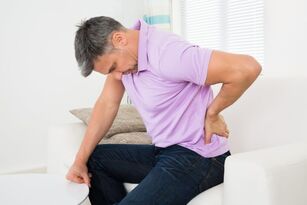 For example, in pyelonephritis, the kidney tissue becomes very swollen and the capsule stretches, which causes back pain.
For example, in pyelonephritis, the kidney tissue becomes very swollen and the capsule stretches, which causes back pain.
Zone
Symptoms may appear in one place and "spread" along the back, spreading to the peritoneal region. Belt pain affects the whole back. Symptoms can be confused with back and joint disease without additional diagnosis. However, girdle pain generally causes pathologies of the internal organs.
Localization of pain
In ankylosing spondylitis, the symptoms are mainly in the lower back. The pain usually occurs in the morning, may even begin late, and gradually intensifies in the lower back. Low back pain is also associated with the risk of miscarriage after childbirth, diseases of the pelvic organs, tail damage, urological and gynecological pathologies.
In the upper part, the symptomatology occurs with kyphosis, trauma, muscle myositis, osteochondrosis, infectious processes or tumors. Other causes can be pathologies of the gastrointestinal tract, gynecological, kidney and heart disease, pneumonia, pleurisy, influenza, ARVI.
Pain in the left or right side of the lower back is caused by disorders of the central nervous system, spinal cord and internal organs. Symptoms will be seen by the affected area. Immediate onset of negative sensations on the left and right sides is accompanied by pleurisy, hepatitis, pneumonia, cholecystitis, inflammation of the prostate, and in women - appendages.
Characteristics in women and men
Some types of pain can only be seen in women. For example, with gynecological diseases. Adnexitis is characterized by the appearance of discomfort in the lower abdomen. In this case, the pain sometimes spreads to the lower back. During pregnancy, the primary symptomatology occurs in the groin area and spreads to the lumbar region due to increased load on the spine. 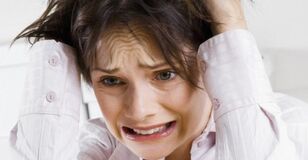 Low back pain occurs during pregnancy, during childbirth with the risk of miscarriage.
Low back pain occurs during pregnancy, during childbirth with the risk of miscarriage.
Menopause can cause back pain in the lower back when menstruation stops. Symptoms in the lumbar region are affected by fluctuations in estrogen levels, circulatory disorders, early stages of osteochondrosis, hernias and other diseases of the spine. Pain is also the result of stress, which women are more exposed to than men. In this case, the symptoms are periodic.
In men, back pain is more common in occupational activities, risks - great physical strength, hypothermia, drafts. There are a number of diseases that cause the onset of negative symptoms in the lower back. Pain with prostatitis first appears in the anal area, but can spread to the back. Epididymitis is characterized by an inflammatory process. Initially, the pain appears in the groin area, then spreads to the lower back. At the same time, it is accompanied by a rise in temperature and swelling of the scrotum.
First Aid
What to do if the back pain in hell occurs spontaneously? The following steps should be taken immediately:
- Be sure to rest your back.
- Hold a comfortable position, it is best to lie on a hard surface.
- You can put ice on the back, but before that, put it on a gauze wrapped in 3-4 layers. This can only be done if the cause of the pain is not an organ infection.
- Apply a soothing analgesic gel to the affected area.
- Take painkillers.
All these activities will help to get rid of severe back pain. However, expert advice and examination are needed to determine the true cause of this attack and prescribe the necessary treatment.
What not to do
If there is a sudden pain in the back, doctors advise not to use heated ointments and gels immediately. They stimulate blood flow to the wound site, which helps to increase swelling and then pain. It is completely and utterly excluded before consulting a doctor or an ambulance:
- Performs exercises of your choice.
- Wash in the sauna or steam bath, do not use contrasting showers.
- Drink alcohol to reduce pain.
Only after examination and diagnosis, the doctor has the right to prescribe treatment for low back pain.
What should I do next, which doctor should I see?
You should first consult a therapist. He conducts an initial examination, prescribes the necessary tests and sends the results to a narrow specialist - traumatologist, surgeon, neurologist. If the pain is associated with a malignant form, an oncologist should be consulted. When caused by pathologies of the gastrointestinal tract - a gastroenterologist, with gynecological diseases - a gynecologist, men - a urologist or proctologist.
Verification and verification
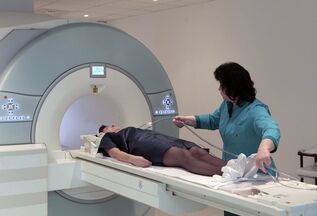
To find out why your back hurts, you are first visualized and then palpated. With its help you can determine the localization of the symptom. The patient describes the nature of the pain, the duration of the attacks, which can be seen later (falling, physical activity). In addition, a number of studies are being conducted:
- Blood test. May indicate inflammation, the presence of infection, tumors.
- urinalysis. Allows to rule out kidney pathology. If the analysis is poor, an additional ultrasound is prescribed.
- X-rays. Allows to identify inflammatory processes, diseases of the spine, trauma, cracks, fractures, compressed nerves. Ideally, radiographs of the spine and pelvis are performed.
- CT. Tomography is more informative than X-ray, may show small defects, 3B image is created. At the same time, all bone structures are clearly visible.
- MRI. Allows you to examine the soft tissues inside or near the spine. At the same time, the condition of the spinal cord, nerve roots, ligaments and muscles is checked. Hernia and vascular changes are clearly visible.
However, CT and MRI are only indicated for severe symptoms. Generally, X-rays or ultrasound, laboratory tests of blood and urine are sufficient.
Basic therapy
If back pain is caused by problems in the spine, then a complex treatment of the pathology is applied. This includes the following activities:
- arranging a gentle regimen for the waist;
- to conduct manual therapy;
- application of therapeutic massage;
- physiotherapy and reflexology sessions: acupuncture, UHF and others;
- drug treatment: drugs, ointments, blockades;
- wear a special corset if necessary;
- Therapeutic gymnastics.
The main focus is on drug treatment, which is primarily aimed at relieving the negative symptoms and eliminating the inflammation. Physiotherapy, massage, exercise therapy are prescribed as additional funds. In difficult cases, surgery may be required.
Drug Treatment
Anti-inflammatory drugs are the first choice for back pain. They also relieve pain. Analgesics can be prescribed at the same time. Muscle relaxants are also prescribed. Chondroprotectors are prescribed to reduce degenerative processes in cartilage. Sometimes pain relievers are used to relieve the pain.
Topical ointments and gels are divided into the following types:
- Remedies based on non-steroidal anti-inflammatory components.
- Drugs mixed with anti-inflammatory effect and tissue cell regeneration.
- Anesthetics and irritants.
- Homeopathic medicines.
- Chondroprotectors that promote cartilage tissue regeneration.
- Massage products (cosmetics).
It's important to know that these methods can reduce pain, but they can't cure the root cause. For example, if back pain occurs for this reason, damage to internal organs. In this case, you should undergo an examination, and a specialist will prescribe an effective treatment for this particular pathology.
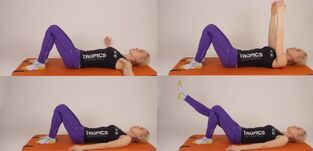
Sports and massage
Sports therapy (therapeutic gymnastics) and massage are recommended to strengthen the muscular frame of the back, normalize blood circulation and increase tone. Exercise prevents back and back pain. The complex of exercise therapy is selected individually. Massage enhances the effectiveness of exercises, restores the elasticity and resilience of the joints. It can be combined with a bath or sauna only on the advice of a doctor.
Physiotherapy
Physiotherapy methods are prescribed only after the elimination of acute attacks of low back pain. Then the procedures help to reduce it or prevent inflammation. The following are used as physiotherapy:
- mud treatment;
- electrophoresis;
- balneotherapy;
- electrical stimulation of muscles;
- phonophoresis (ultrasound);
- paraffin treatment;
- reflexology;
- amplipulse therapy.
The procedures help to reduce swelling, have a analgesic effect, improve blood circulation, relax muscles, normalize metabolic processes and lymph flow.
Surgery
An absolute indication for surgery is cauda equina syndrome when urinary and fecal incontinence occurs and perineum congestion occurs. In addition, if drug treatment is ineffective, if lower back pain lasts more than six months and begins to spread to the legs, intervention is needed. Surgery is also performed in the presence of a hernia.

Folk medicine
In addition, folk remedies can be used - infusions, herbal sources. Compresses are prepared (for example, chopped onions, fresh burdock leaves, boiled potatoes with horseradish, mustard). Rub with tincture of eucalyptus and burdock, use a mixture of warm honey, cologne, paprika, iodine and valerian. For internal use, a vodka tincture with a sword or a decoction of wheat with coriander and milk is recommended.
Expert advice
If the pain is felt for at least 3 months, it is considered acute pain. The following recommendations will help speed up the recovery and reduce the intensity of acute back pain:
- It is important for the patient to rest for 2-3 days. You should go to bed and take a comfortable position: lie down next to you and put a pillow between your knees, or lie on your back and put a pillow under your knees. You can not be stationary all day - it is recommended to get out of bed every 2-3 hours and warm up for 10-15 minutes.
- If pain is unbearable, painkillers and anti-inflammatory drugs should be taken regularly. You can't get the effect you want to take only when the pain increases.
- Taking a hot shower every 3 hours or applying a cold heating pad for 10-15 minutes helps - it improves blood circulation, reduces pain and inflammation.
When you feel well, you should gradually return to your normal lifestyle. Prolonged bed rest contributes to muscle atrophy and aggravates the disease. You can train your body by walking or jogging in a simulator - this is the simplest exercise for back pain.
If back pain is not an independent disease, it is the result of a serious disease in the body. Therefore, you should immediately consult a medical institution to determine the pathology and authorized treatment.
































